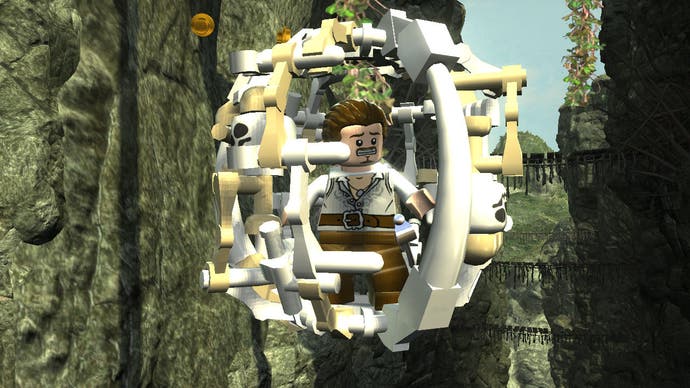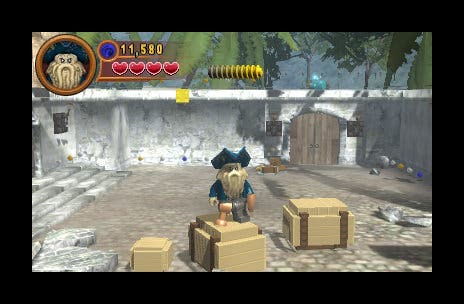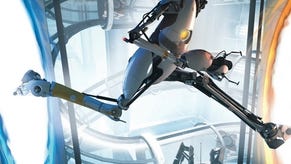Lego Pirates of the Caribbean
A Jerry Brickheimer production.
One of the unsung strengths of the Lego games is that their reductive approach to plotting allows them to skip or gloss over the weaker elements of their inspiration. In the case of Pirates of the Caribbean, that's several hours' worth of storytelling bloat - and at times, TT Games punctures it perfectly.
In particular, the ludicrous convolutions of third film At World's End are beautifully skewered in one single scene where the characters rapidly exchange places until half are on one side and half on the other. Who needs two hours of cross and double-cross when a single thirty-second sequence can cover similar ground without the audience looking at their watches - and offer a knowing chuckle into the bargain?
Just as the Star Wars prequels were shorn of midichlorians, younglings and dialogue about sand being rough, and transformed into lean, exciting, set-piece-driven action films, the Pirates movies suddenly become much more appealing in Lego form. Sure, there are perhaps too many stages where you're fighting aboard a ship at night and/or during a storm, but you can blame the apparently light-phobic helmsman Gore Verbinski for that.
The parodies, as ever, are on the money, and the naturally dark tone of the Pirates films was clearly more fun for the developer to subvert. Here, the dramatic climax of Dead Man's Chest sees Jack Sparrow happily embrace his imminent demise, stepping into the mouth of the Kraken not wielding a sword, but a toothbrush with a generous squirt of Aquafresh.

As with the films, Jack is the undoubted star. That walk - half stagger, half swagger - is even more of a hoot in miniature. He constantly looks on the verge of toppling over, leaning backwards then forwards as he capers along.
In fact, Lego Jack is an idealised version of the character - a little more akin to the dashing anti-hero Bruckheimer and co. imagined before Johnny Depp decided his portrayal needed a little more kohl, Kilo Kai and Keith Richards. He might not have the walk of a swashbuckler, but his swordfighting skills are much more impressive than in the films. Michael Bolton would surely approve.
Finishing flourishes see him revert to type, distracting his enemy by pointing one way before whacking them with an empty rum bottle, or stepping back and lobbing a banana skin under their feet. Best of all is when he picks up a guitar; while most characters will strum a gentle acoustic melody, Jack scratches out a scuzzy rock riff. Try to move while playing and - brilliantly - he adopts Chuck Berry's famous duckwalk.

When he's not clashing swords with guards or piratical foes, Jack's compass is his most important weapon, used to find secret items by following a twisting path highlighted in blue, with the added bonus of a breadcrumb trail of Lego studs. Most items can be located simply through thorough exploration, but it's much more satisfying to find them properly - where X marks the spot.
Not that you'll be able to find them all on your first play. Perhaps even more so than previous Lego games, the real meat of the game is found in the Free Play mode. To truly complete a stage, you'll need to have unlocked and purchased a wide range of characters - from the Flying Dutchman crew members able to slip through strange, slimy portals to the blunderbuss-wielding bit-parters whose weapons can blow a hole in silver objects.




